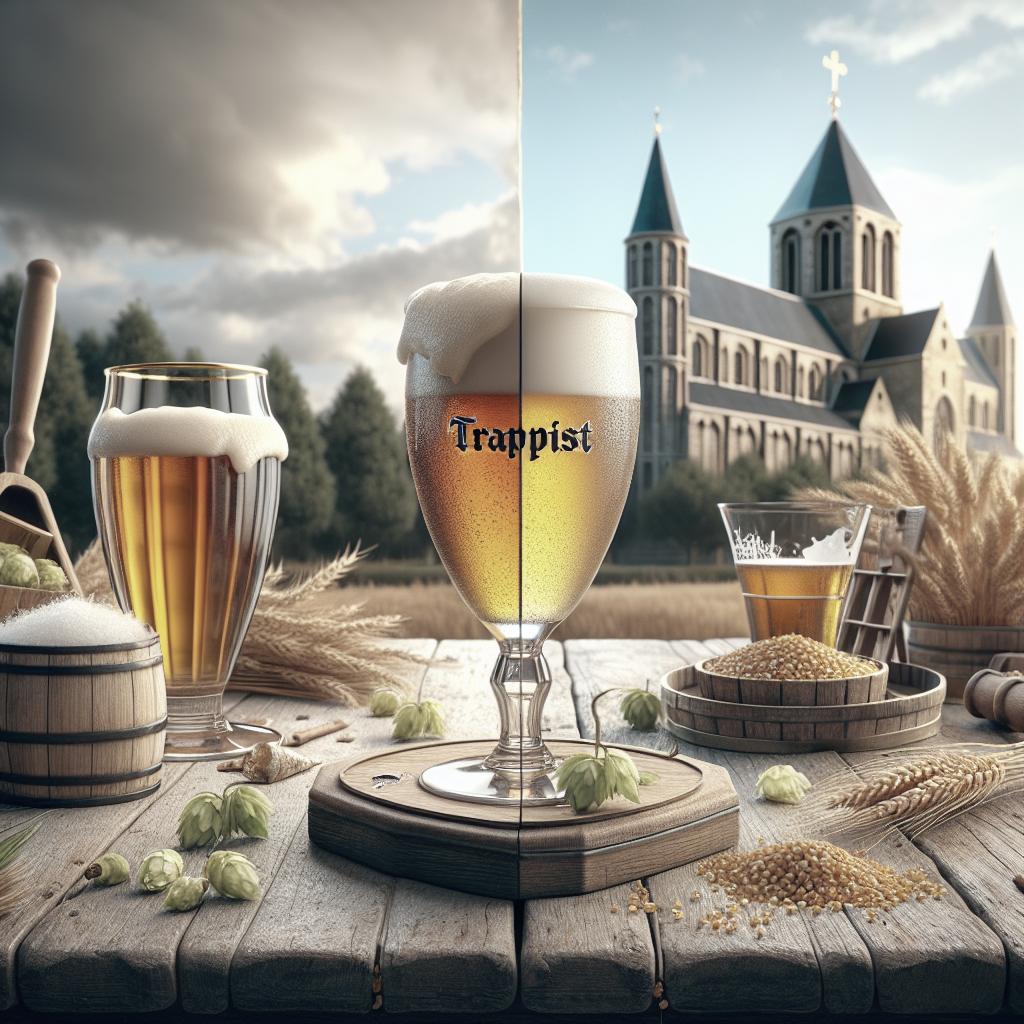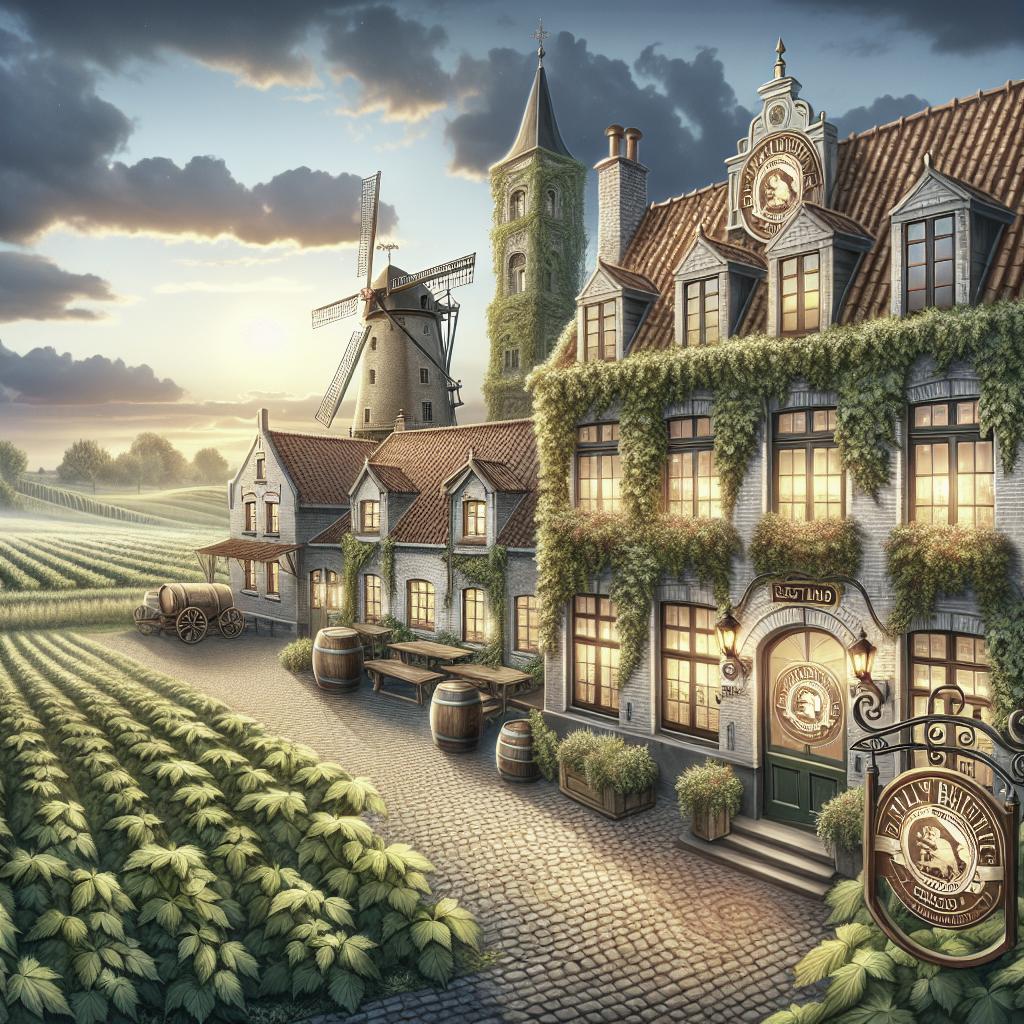“`html
Trappist Beer vs. Abbey Beer: What’s the Difference?
When it comes to Belgian beer, two terms often leave enthusiasts puzzled: Trappist and Abbey beers. Both types offer a taste of tradition and craftsmanship, but they are distinct in various ways. This blog post will delve into the intricacies of Trappist beer, shedding light on its unique characteristics through the stories of six authentic Trappist breweries. From Achel’s understated elegance to the renowned exclusivity of Westvleteren, we’ll explore what makes each brewery special. We’ll also touch on the broader category of Abbey beers, typically brewed in the traditional monastic style but without the strict Trappist certification. By the end of this article, you’ll understand not only the differences between Trappist and Abbey beers but also the rich heritage and craft behind each bottle. Let’s embark on this flavorful journey through the world of monastic beers.
Achel
Achel, or Achelse Kluis, represents one of the lesser-known Trappist breweries yet holds its own with a distinctive flair. Located in the northeast of Belgium at the Abbey of Saint Benedict, Achel continues the rich monastic tradition despite its small production scale. The brewery was revived in the late 20th century and has since dedicated itself to creating authentic Trappist beers.
Unlike larger Trappist breweries, Achel prides itself on producing limited quantities, ensuring quality over quantity. The beer is a testament to traditional brewing methods passed down through generations of monks. Achel’s portfolio often includes blonde and dark beers, characterized by a harmonious blend of fruity and malty flavors. While it may not hold the widespread recognition of other Trappists, Achel offers a serene yet richly flavored brew for those in pursuit of something uniquely crafted.
Chimay
Arguably one of the most well-known Trappist beers, Chimay’s roots run deep within the Scourmont Abbey in Belgium. With a reputation that spans the globe, Chimay excels in introducing the lay drinker to Trappist offerings. Scourmont Abbey has been home to the Chimay brewery since 1862, and each bottle is a testament to time-honored monastic traditions.
Chimay is renowned not only for its exquisite lineup of cheeses but also for its diverse beer selection, ranging from the amber-hued Chimay Blue to the lighter Chimay White. Each variant offers a distinct palette of flavors—whether it’s the fruity, spicy notes or a stronger, malty profile. Beyond the boundaries of beverage, Chimay immerses itself in community work, with proceeds supporting social projects and the upkeep of its abbey.
Orval
Nestled within the scenic Vallée de la Bievre, Orval is celebrated for its single but distinctive offering: the Orval Trappist Ale. The brewery, established in the 1930s, incorporates a unique brewing process that includes extensive dry-hopping and the use of wild yeast, which sets its taste apart from other Trappist beers.
Orval’s beer stands out for its complex and evolving flavor profile, characterized by citrusy, hoppy notes and a pronounced Brettanomyces yeast influence. The ale matures with age, so beer enthusiasts often purchase bottles to cellar. Beyond brewing, Orval Abbey is an important historical site, offering serene vistas and a connection to monastic history for those lucky enough to visit.
Rochefort
From Rochefort Abbey, nestled in the Ardennes, comes another highly esteemed Trappist beer range. Rochefort beers are lauded for their depth and complexity, offering a taste that resonates with seasoned beer aficionados. The abbey’s roots date back to the 13th century, though brewing officially began in the 16th century.
The Rochefort line-up includes Rochefort 6, 8, and 10, each denoting the beer’s strength. They share a dark, fruity richness, with flavors often described as spicy, caramelized, and slightly sweet. Due to their complex taste, Rochefort beers are often compared to fine wines, evolving over time with aging potential that attracts true beer enthusiasts worldwide.
Westmalle
Westmalle Abbey’s monastic brewing endeavors date back to 1836, earning it a prominent place within the Trappist canon. Situated near Antwerp, this Trappist brewery holds a revered position, especially noted for inventing the tripel beer style. Westmalle is deeply involved in its traditional brewing methods, emphasizing quality and authenticity.
Westmalle offers a concise range, primarily featuring the Westmalle Dubbel and the groundbreaking Westmalle Tripel. The latter, often dubbed “the Mother of all Tripels,” presents an intricate blend of hoppy bitterness and fruity sweetness that has inspired countless imitations worldwide. Westmalle remains an exemplary figure of monastic dedication, balancing brewing innovation and spiritual commitment.
Westvleteren
Westvleteren, despite its sparse production, has achieved a near-mythical status among beer enthusiasts. Brewed by the monks of the Saint Sixtus Abbey, the beer is famed for its exclusivity, often considered the “holy grail” of beers due to its limited availability and distribution. Securing a bottle requires patience and often, the luck of timing a purchase through the abbey’s reservation system.
Westvleteren’s offerings are minimalist but profound, featuring only three varieties, with the Westvleteren 12 often hailed as one of the best beers in the world. Its deep, rich flavors offer a symphony of dark fruit, caramel, and a touch of spice. This purity and depth of taste are why many revere it as the pinnacle of Trappist brewing.
Resources
The world of Trappist and Abbey beers is vast, with a rich tapestry of history and tradition. For those eager to learn more, numerous resources are available. Books such as “The World Atlas of Beer” offer comprehensive insights into the diversity of global beer cultures, while websites like BeerAdvocate and RateBeer provide community-driven reviews and discussions. Also, many breweries offer tours, where visitors can experience firsthand the monastic life and the intricate process of brewing these renowned beers.
For those looking to explore the realm visually, Instagram serves as a vibrant platform to connect with fellow beer aficionados. Accounts like @belgianbeerworld and @trappist.lovers are dedicated to showcasing the beauty and diversity of Trappist and Abbey beers. From bottle shots to serving suggestions, these profiles not only celebrate the beers themselves but also the culture and tradition behind them. Following these accounts can inspire your next adventure into the world of monastic brews.
Final Thoughts
The journey through the world of Trappist beers reveals the nuances that set them apart from the broader category of Abbey beers. Each Trappist brewery, from Achel’s reserved elegance to Westvleteren’s rare offerings, contributes a unique voice to the tapestry of monastic brewing. The tradition, history, and strict standards of Trappist brewing create beers that are not only beverages but also cultural and spiritual artifacts. In contrast, Abbey beers, while inspired by monastic traditions, may not adhere to the same rigorous standards but still provide a delightful experience rooted in history and craft.
As you delve into this world, remember that behind each sip is a story of devotion, patience, and community, where every pint serves a higher calling. The table that follows encapsulates the essence of what makes these iconic Trappist beers stand out, ensuring you are well-equipped for your next tasting adventure.
| Brewery | Origin | Specialty |
|---|---|---|
| Achel | Saint Benedict Abbey, Belgium | Limited production with a focus on traditional brewing methods and a range of blonde and dark beers. |
| Chimay | Scourmont Abbey, Belgium | Wide recognition for diverse beers and social projects supported by profits. |
| Orval | Orval Abbey, Belgium | Unique ale with a complex flavor profile influenced by wild yeast. |
| Rochefort | Rochefort Abbey, Belgium | Dark, fruity, and rich beers often compared to fine wines. |
| Westmalle | Westmalle Abbey, Belgium | Notable for the invention of the tripel style and a concise yet impactful beer range. |
| Westvleteren | Saint Sixtus Abbey, Belgium | Renowned for its exclusivity and profound flavor profile, especially in Westvleteren 12. |
“`


